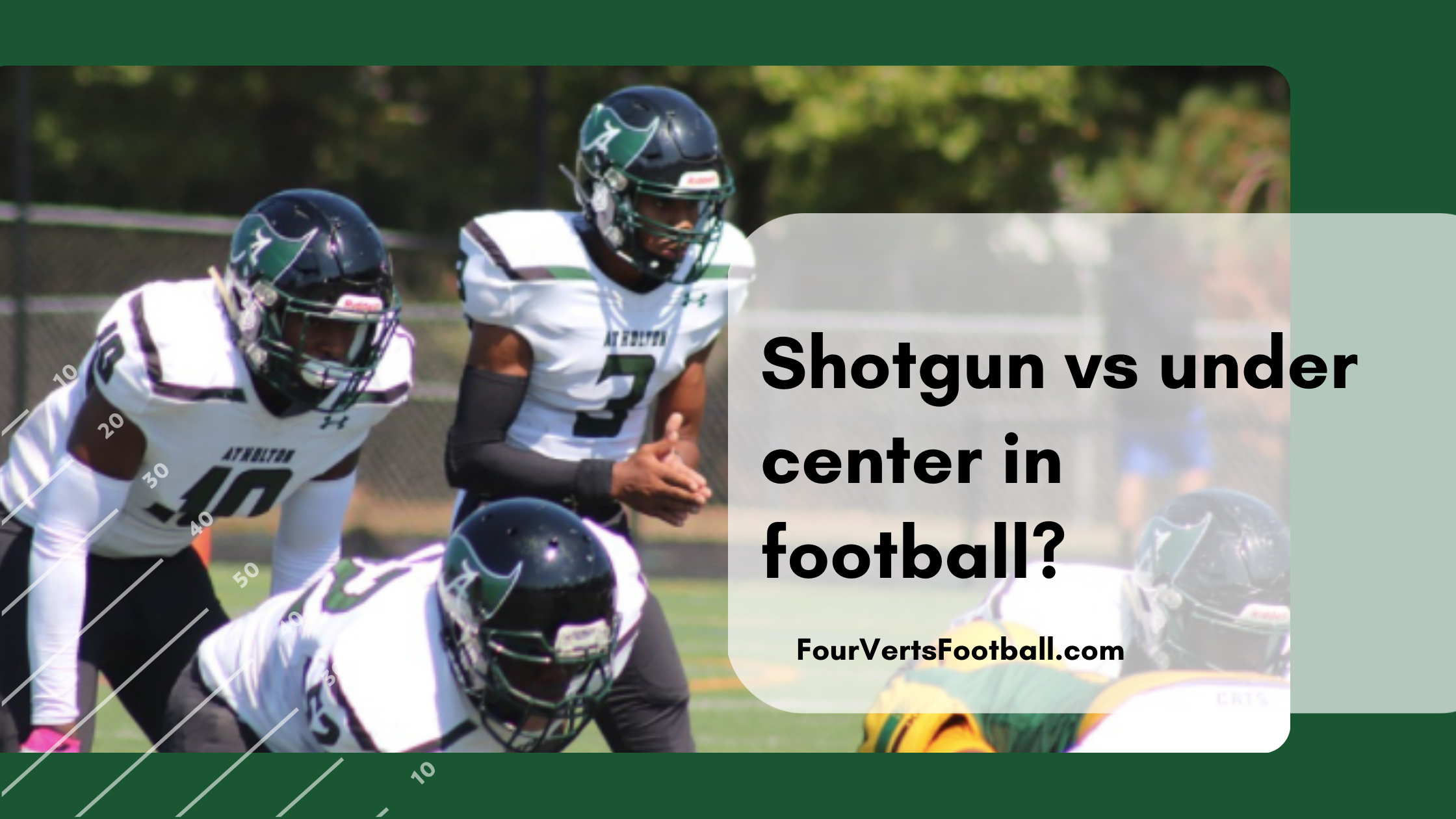The term shotgun vs under center in football refer to the way in which a quarterback is given the ball to start a play. When a quarterback is under center he will be standing directly behind the center and will be handing the ball between the center’s leg.
When in the shotgun formation the quarterback is several yards behind the center and receives the ball via a pass between the center’s legs.
This means that a quarterback in a shotgun formation will receive the ball several yards further in the backfield than a quarterback that is under center.
These differing formations affect several different factors of the play including the timing of the routes, the quarterback’s visions, and the ability of the defense to read the quarterback’s eyes.
Major Differences
Footwork And Vision
One of the biggest differences between shotgun vs under center is the footwork and vision required by the quarterback.
When in shotgun the ball will be snapped into the quarterback’s hands and he will have vision of most of the field.
While snapping under the center is a different story. As you grab the ball from the center the quarterback will need to get his head up to see the field. The quarterback will then have to step back into the pocket using proper footwork.
Oftentimes routes will be aligned with the number of steps the quarterback has taken into the pocket. This action of snapping the ball under center requires a lot of footwork and skill that not all qbs have developed.
Scanning The Field And Football IQ
The position of these two formations also affects the quarterback’s ability to read the field.
The shotgun formation as stated earlier allows you to get a wide view of the field. Though as the play starts the quarterback will have to keep his eye on the ball as he catches the snap.
An under-center quarterback on the other hand will have his eyes up immediately watching the defense. Though the under center qb can only see part of the field he can use this knowledge to understand the defense.
For example, if a quarterback has a great football IQ he may be able to identify the coverage formation just from watching a single or safety or cornerback move.
This brief analysis of the defense’s first movement can lead to under-center quarterbacks getting a quick read on the defense.
Though this is usually only true for quarterbacks with a great understanding of the game.
Longer Developing Route
Another difference between these two plays is that the shotgun formation is better suited for long developing plays. It is a general rule that the deeper a quarterback travels into the pocket the deeper the routes the receivers are running.
And though players will still run long routes when a quarterback is under center it is much less common. In order for a quarterback under center to throw a long-developing pass he will likely need to complete a five or seven-step drop.
This takes a considerable amount of time to complete an under center start for the quarterback and requires some good pass protection.
A shotgun formation on the hand has the quarterback catching the ball three to five yards back into the offensive backfield. This means if the quarterback wants to complete a long developing pass he may only have to take a step or two back.
The extra distance provided by shotgun vs under center allows the offensive line more room to protect the quarterback. This allows the quarterback to stay in the pocket and complete the throw without having to retreat too far backward.
Reading The Eyes
Another interesting difference between shotgun and under center is the reading of the quarterback’s eyes.
Believe it or not, the shotgun formation allows the defense a better opportunity to read where the quarterback is planning on throwing the ball.
When in shotgun it is common for a player to have a single defender focused in their vision. They will then read what this defender does and throw the ball based on their decision.
This is an easy read to make for quarterbacks, the trouble is it’s easy for the defense to read too. If the quarterback is standing still in the pocket staring at a single defender it is not too hard to guess where the ball is going.
Defenders can key in on this information and potentially earn themselves a pick-six if they time their pass breakup right.
Under center quarterbacks on the other hand are much harder to read. Since this formation starts with the quarterback at the line of scrimmage he is much harder to make out.
Trying to spot this player over top the line of scrimmage while he is working backward into the pocket is a much harder feat. This makes it more difficult to read the quarterback’s eyes simply because he is harder to track down.


How can I find which NFL QB is usually in the Shotgun vs under Center?
What percentage?
Stats for current year and past years?